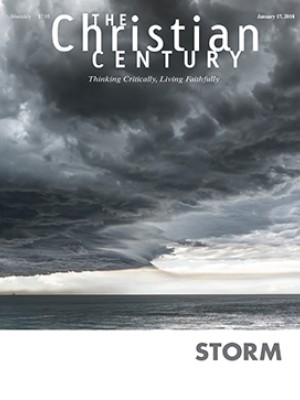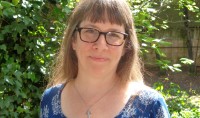The inexhaustible spiritual practice of rereading
In a course on contemplative prayer, I assigned just six books—and we read them each twice.

Recently, I heard Minna Zallman Proctor read from her new book of nonfiction short stories—“true stories,” she calls them. During the Q&A, someone asked her about the difference between teaching fiction writing and nonfiction writing. Proctor replied that fiction writers are taught to make their writing more “richly imagined,” while nonfiction writers are taught to make theirs more “richly observed.”
She went on to describe for us an exercise to strengthen both capacities. If you’re trying to describe something happening in a room, she said, you have to send your attention all the way around it. You ask, what does this room look like? What does it smell like? How warm or cool is it? Where do the light and the shadows fall? What’s the feeling in the room, the atmosphere? Who is in the room, and what is in the room, and what is the shape of the space between them?
Read our latest issue or browse back issues.
You send your attention into every corner of the room, beginning in one place and sweeping all the way around. Then you do it again, she said, to discover what you missed the first time. And then you do it again, and again.
In a course on contemplative prayer last semester, I tried my own version of Proctor’s writing exercise. Instead of assigning new reading for every meeting, I assigned only six books: Origen’s On Prayer, Teresa of Ávila’s Life, the anonymous The Way of a Pilgrim, Simone Weil’s Waiting for God, Howard Thurman’s Disciplines of the Spirit, and Thomas Merton’s Contemplative Prayer. We read these books once, and then we read them again. I wish we could have read them together yet again, but we ran out of time.
We read the books the first time through the way we would for any class. We read them at home, or in the library, or on the train, or sitting outside in the sunshine. We read alone and yet together, knowing that everyone else was making their way through each book at roughly the same time. Everyone wrote a one-page paper on a single sentence or short passage from each book, looking for ways in which the light generated by that close, focused reading might illuminate the whole. When we met in class, we paired up for a few minutes and shared the sentence we analyzed. From those focused nubs of conversation, our discussion opened outward, gathering up more and more of the book under discussion, but also more and more fragments of our lives and the life of the world. By the end of each class, we had made something together—however incomplete—from our reading of the book and the book’s reading of us.
The second time through, we experimented with practices of rereading. One student memorized and recited a long passage from Simone Weil’s essay on school studies. Becoming more intimate with that text, she said, had revealed some passages that resisted memorization—stumbling blocks that led her to dig deeper into those places, as Origen says stumbling blocks should lead us to do, rather than simply passing over their surfaces. Another student read a passage from Teresa’s Life aloud to a handful of friends and found her understanding of it upended by the stories they told in response.
For several students, the rereading process involved committing themselves to prayer practices that the books describe. A student who had never read the Gospels before read something from them every day. A Confucian student took a few lines from Confucian teaching and recited them hundreds of times each day for a week, an effort to discover what the practice described in The Way of a Pilgrim—praying the Jesus Prayer without ceasing—could teach him about his own tradition.
One student made a florilegium, taking a fragment of each text and placing them alongside each other to form a new text, creating a feeling of greater and greater spaciousness as each new voice entered. Another student disassembled Weil’s essay on the Lord’s Prayer and reassembled it to create a new text on prayer, made from Weil’s words but speaking in a new voice. As the student wrote in her accompanying “translator’s note,” this practice of rereading helped her “lay bare the metaphors” and “make plain the emphases of the word choices,” a process that helped illuminate, for her, God’s silence.
Like the writing exercise of imagining or observing one’s way around a room over and over again, these experiments in rereading rely on a fundamental conviction about the world: that it is inexhaustible, that if we keep moving through it, looking and reading, we will continue to see things we didn’t see before. My students’ practices of rereading made visible so much we had not seen when we read the books the first time. But the inexhaustibleness of these books did not depend only on the words out of which they were made. It depended upon the growing conversation between the books themselves and our deepening understanding of each other. It depended on the intersection of the books with our lives and with the world outside our classroom.
It depended, ultimately, on the inexhaustibility of God, whom we, in our readings and our rereadings, are trying to more richly imagine and more richly observe.
A version of this article appears in the January 17 print edition under the title “Reread it again.”






